“The art of healing comes from nature and not from the physician. Therefore, the physician must start from nature with an open mind.”
These wise words come from the Swiss physician, philosopher and alchemist known simply as Paracelsus (1493-1541). Paracelsus taught that the human body was a complex chemical system that had to be balanced with its environment. One way to keep your body in alignment with nature is by using plants to treat common physical ailments.
Whether your passion is emergency preparedness, homestead survival, or you just want to avoid modern medicine with all its side effects, you should check out these 11 powerful plants that can quickly relieve pain.
If You See This Plant in Your Backyard Burn It Immediately!
Here are 11 powerful plants that can quickly relieve pain.
Aloe Vera
The ancient Egyptians called Aloe Vera the “plant of immortality,” and for good reason. The gel from the Aloe Vera plant contains significant anti-inflammatory and antioxidant properties.
You can use this gel to soothe burns, cuts, scrapes, and even cold sores. When you drink it in juice form, it helps the gastrointestinal tract to function at an optimal level.
Similar to a cactus, the Aloe Vera plant has long serrated edges. A translucent gel is found within the thick fleshy part between the layers of tough skin. Here is how to remove the gel.
- Break off a leaf as close to the stem as possible and place it on a cutting board.
- Then use a sharp knife to slice away both ends and to remove the spiny edges.
- Now, hold the leaf with one hand on the top layer of skin as you slide the knife between the top layer of skin and the gel beneath it. Set that skin layer aside.
- Next, slide the knife between the gel and the other piece of skin as you repeat the process.
You now should have a section of aloe gel that you can apply directly to the skin for pain relief. Another option is to blend the gel with other smoothie ingredients to help relieve indigestion.
Basil
Fragrant basil does much more than just add flavor and aroma to your favorite Mediterranean recipes. It can help relieve congestion caused by colds and flu, and it can help relax muscles and improve blood circulation.
Here is how to make soothing basil tea.
- Snip about a dozen basil leaves.
- Combine them with a teaspoon of ginger in a skillet or pan and stir gently over low heat until the leaves have softened.
- Add a cup of water and boil the mixture for a few minutes.
- Add a teaspoon or so of honey if desired and then sip the tea throughout the day, especially after meals.
Cloves
Cloves have analgesic and antibacterial properties that make them useful as a numbing agent for toothaches and gum pain. Here’s how to use them.
- Crush a few whole cloves before mixing them with an equal amount of cayenne pepper powder in a small bowl.
- Add just enough water to make a thick paste.
- Roll a cotton ball or a cotton swab into the mixture and apply the cotton directly to the affected area of the mouth.
As your saliva mixes with the paste, you will notice a numbing effect that eases pain and discomfort.
Dill
Commonly used to flavor deviled eggs and vegetable dishes, dill also can be used for medicinal purposes. A natural diuretic, dill has properties that can help ease anxiety, insomnia, hiccups, menstrual cramps, and digestive disorders.
You can make a dill powder by simply grinding up the seeds. For ailment relief, take a teaspoon of the powder twice a day for up to 21 days. For best results, hold the powder under your tongue for about 10 minutes.
You can make dill tea with two teaspoons of mashed dill seeds per cup of hot water. Let the seeds steep for about 10 minutes until the tea has a yellow color. Use a filter to remove the seeds, then sip the tea.
Garlic
The ancient Greek physician Hippocrates, known as the Father of Western Medicine, prescribed garlic to treat many medical complaints. The ancient Egyptian, Babylonians, Greeks, Romans and Chinese civilizations also favored garlic for medicinal uses.
Consuming garlic can boost the immune system and it has both antioxidant and anti-inflammatory properties that may help ease arthritis and back pain.
To use garlic topically, you can crush about 10 fresh garlic cloves to make a paste. Apply the paste on the affected area, cover with a clean cloth and then leave in place for about 30 minutes.
Although cooked garlic still has health benefits, it is most effective in its raw state. Try adding raw garlic to homemade salad dressings, marinades, tomato sauces, soups and stews. Whether you’re using garlic raw or cooked, you can boost its benefits by first chopping or crushing it and then letting it sit for 10 minutes before either eating it as is or cooking it.
Ginger
The root of the ginger plant has anti-inflammatory properties that make it useful in treating headaches. muscle aches and overall body soreness. As a natural remedy for nausea, ginger help many women handle the uncomfortable waves of morning sickness that can come with early pregnancy.
To make ginger tea, grate about two inches of fresh raw ginger into a two-cup glass measuring cup. Then, pour boiling water to the 1-1/2 cup line. Let the tea steep for 10 minutes before straining it into a mug and adding honey or sugar to taste.
Lavender
Sweet-smelling lavender can serve as an antiseptic, a diuretic and a relaxant. Sipping lavender tea, made from lavender buds, can help relieve muscle soreness and muscle spasms. Lavender tea also can help fight off harmful bacteria and ease stomach irritation.
To brew homemade lavender tea, boil one tablespoon of dried lavender buds in two cups of water for 10 minutes. Strain. Add honey if desired. You may drink lavender tea up to three times a day or just before bedtime to help you relax. Be sure to inhale the aroma, which in itself has healing properties.
Mint
Mint can serve as a decongestant during cold and flu season. It helps ease headaches, arthritis pain and indigestion. In addition, mint has antiseptic and antibacterial properties that make it useful for treating cuts and burns.
Drinking freshly brewed mint tea contributes to fresh breath and reduces stomach bloating and indigestion.
To make a flavorful mint tea, you’ll need a large handful of fresh mint leaves. Roughly tear the leaves and places them in a strainer in your teapot. Add enough boiling water to cover the strainer and cover the teapot. Let the leaves steep for about 10 minutes.
Now gently crush the leaves with the back of a wooden spoon to release their oils. Before removing the strainer, press on the leaves once again to release all the liquid. Pour the mixture into a mug and sweeten as desired before drinking.
Parsley
Parsley is so much more than a decorative addition to a dinner plate. It is rich in vitamin C, vitamin A, iron, iodine and calcium. It also helps freshen breath.
Parsley can help reduce fluid retention and speed up the elimination of harmful toxins from the digestive tract.
To make soothing and nutritious parsley tea, place one teaspoon of crushed parsley seeds or two teaspoons of dried parsley leaves into one cup of boiling water. Let the mixture steep for 10 minutes before straining. Sip the tea up to three times a day.
Rosemary
Just smelling aromatic rosemary can benefit your brain’s cognitive function, including concentration and memory. Rosemary also can help ease muscular pain, indigestion and headaches. It has antibacterial properties, and it works to help detoxify the liver. When used topically, rosemary can help relieve toothaches, eczema and joint or muscle pain.
Place a fresh sprig of rosemary in a teapot and let it steep for five minutes. If you allow the sprig to steep longer, you will draw out more nutrients, but the tea will have a more bitter taste. Filter out the stem and needles and sip, adding your favorite sweetener as desired.
Thyme
Thyme has numerous antiseptic, antibacterial and antioxidant properties. As a tea, it can work as an expectorant, clearing the lungs of congestion during colds and flu. Thyme tea also soothes a sore throat, settles indigestion, reduces the discomfort of menstrual cramps and helps relieve other aches and pains.
To brew thyme tea, you first need to dry the leaves. Cut the stalks, wash them and dry them by letting them hang upside down in small bundles for about two weeks.
Then remove the dry thyme leaves before crushing them into a fine powder or leaving them whole for your tea.
Add one teaspoon of dried thyme leaves to two cups of boiling water. Then reduce heat to a simmer and cover the pot, allowing the leaves to steep for five minutes. Then strain the tea into a cup, adding lemon or honey as desired.
Conclusion
Plant-based remedies have been tested with time through the centuries — about eighty percent of the world’s population uses plants to treat everything from the common cold to high blood pressure. In many parts of the world, pharmacies even dispense herbs prescribed by physicians. In fact, as late as the mid-20th century in the U.S., many pharmaceutical companies offered plant-based medicines in tablet, ointment and liquid formulas.
Keep your eyes peeled because you may be able to find some of these herbs in your backyard. But if not, most of these herbs are relatively easy and enjoyable to grow. What’s more is that you can enjoy the health benefits of these plants year-round by growing them both outdoors and indoors, often on a sunny windowsill. As with any form of medication, it is to consult your health practitioner before beginning a new regimen of plant-based treatments.





























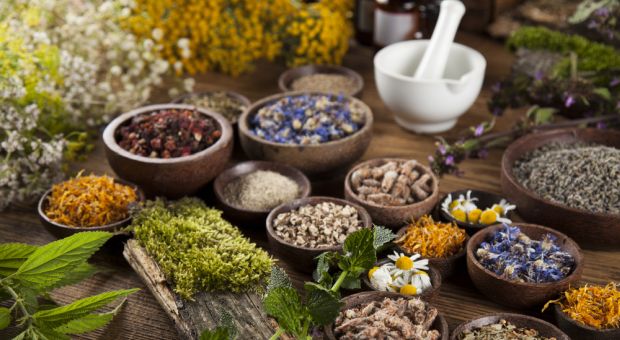
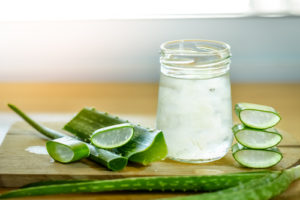
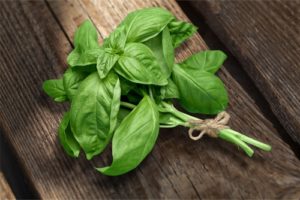
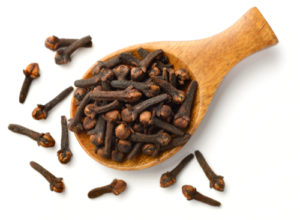
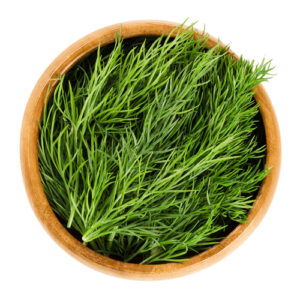
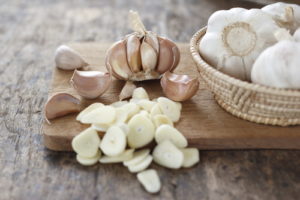
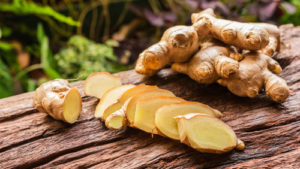
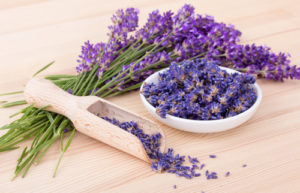
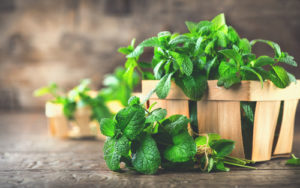
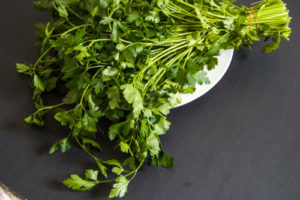
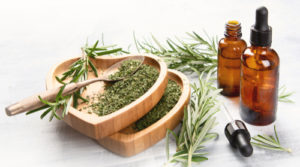
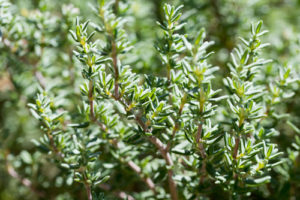






















































CAN YOU PLEASE SING ME UP FOR YOUR NEWSLETTERS.
Hello, Jethro 🙂 Thanks a lot for your interest. You are now subscribed to our newsletter!
GOOD ARTICLE ABOUT SOME “HOME REMEDIES”,BUT THEREE ARE SOOO MANY MORE THAT CAN BE ADDED TO THE LIST. KEEP UP THE GOOD WORK. “STAY PREPPED AND WATCH Y’ALL’S 6”
Kratom and wild lettuce the 2 strongest natural painkillers in order of strength. Kratom can be as strong as hydrocodone it acts on the same receptors. Wild lettuce is more of a dissociative. It makes you feel distant from the pain. With kratom there’s a very mild risk of dependence but even with RX pain meds it took almost a year of daily use to get me to that point. Addiction means doing culturaly unacceptable things to get more of something one is dependent on. Ergo, if kratom is unscheduled where you are,the risk of addiction is almost nonexistent because it’s very simple to get more whenever you need it ( there’s no need to color outside the cultural lines)
Great article! As others mentioned, there are a lot more that could be added to this list, but I think it’s great how you stuck to the more common herbs that most everyone would be able to find and identify.
I enjoy your knowledge that you share. You keep it simple but yet informative. The lay person can understand and relate to the herbs you choose to describe in detail. I would like to be signed up for your newsletter, please. Thank you…..
Hello Karen.
Thank you for reading our articles. You are now subscribed to our newsletter. Please check your inbox and your spam/bulk folder.
Stay safe!
Alex, from Survivopedia 🙂
The subscribe button doesn’t seem to be working …I would like to subscribe Thanks …great articles Awesome content
Hello Deb.
Thank you for reading our page. We have signed you up and now you’re subscribed. You can check your inbox or your spam/bulk folder to see your confirmation email 🙂
Alex, from Survivopedia
This is wonderful please sign me up for your news letter
Thank you for your message, Pat. You are now subscribed to our newsletter.
Alex, from Survivopedia.
Health is wealth. All this information is invaluable because it’s virtually unknown by ‘Everyman USA’.
The story of the great Claude Davis also reminds us – not only of the man whose wartime experiences was the subject of the book and recent movie epic, “HACKSAW RIDGE”, – but of the current plight of the people of the Ukraine.